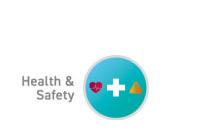
Safe system of Work when using a Kick-Step / step stool.
1. Introduction
A kick-step or step stool is not a ladder and does not have stability issues such as a free-standing ladder. You therefore do not need to attend a Working at Heights course to use one. However, there are hazards of which you should be aware. This guideline has been developed to set out the arrangements which must be followed by staff to reduce the risk of injury when using kick-step or stool in the workplace.
2. Scope
This guideline applies to all staff when working at height where the use of work equipment i.e. kickstep or step stool is required during the course of their work activities.

3.Safe system of Work

British Standard EN 131 applies to step stools

Safe system of work when working at height and using a kick-step or stool
1. As with any work equipment you should be familiar with it before you use it, and if you are not sure, then you should seek advice from your supervisor/line manager
2. It is important to assess kick-step or step stool before each use. Check for damage including:-
Wear and tear on the castors or base that could affect the stability of the step stools
Contamination on the step, such as liquids that could cause sticking or slipping
Buckling, bending or impact damage that could weaken the step
A kick-stool or step stool is designed not to move when you apply weight to it.
3. If you are using a kick-stool it normally has rubber on the base to present a uniform, stable surface for contact with the floor. This reduces the likelihood that the kick stool will slip/move on the flooring when in use. If the rubber is damaged to the extent where it might compromise this facility then it should not be used until the rubber is replaced.
4. Just as important as examining the equipment and checking that it’s still in good working order is assessing the area you’re going to use it in.
Look out for any spillages or obstacles
Avoid using the steps on uneven or unstable ground
Check that the area is clear of other hazards
If using the step in a busy area, inform others or mark out your work area.
5. Tempting though it can be to quickly hop on and off kick-stool or step stool when you need to reach something in a hurry, you should always ensure that you’re

wearing the right clothing for the job.
Make sure that you wear closed-toe shoes with a good grip on the sole so they won’t slip on the stool’s surfaces; open-toed, backless and high-heeled shoes are unsuitable. Likewise, using steps with bare or stocking feet is unwise, as the tread on the step can be uncomfortable on the soles of the feet.
Long and/or baggy trousers should be secured around the ankles to prevent tripping or catching.
6. Be prepared to move the step into new position rather than risk overreaching for access to an item, and subsequently losing your balance. Don’t carry items in both hands when mounting.
7. Plan storage to minimise working at height and manual handling risks.
8. When it comes to storing step stools, you need to make sure that wherever you store them is easily accessible to those who are able to use them, and out of reach of those who aren’t.
Tucking the stool away somewhere inaccessible may result in staff members improvising and using other items instead of the stool, while leaving them out in the open can be a tripping hazard or in children’s centres – a dangerous temptation to young adventurers!
Reporting any concerns

9. Staff must report any concerns to their manager so that the kick-step or step stool suitability can be reviewed. Concerns resulting in harm or near-miss events must be reported on the DATIX system.
10. Staff must not use the kick-step or step stool on identifying any signs of damage or missing parts e.g. rubber on the base is damaged or missing. Staff must attach signage to the equipment warning that it must not be used and inform their line manager, a replacement must be procured. Arrange for the damaged kick step to be collected by logging a call on the Estates helpdesk.

11. In the event of fall from height or near miss, first aid assistance must be offered and arrangements for the injured person to be taken for treatment as necessary.
12. The equipment must be taken out of immediate use, signage attached stating: - “this equipment must not be used” and the date.
13. The event must be reported via the Datix. Where no injury is sustained, this should be recorded as a near miss event.
